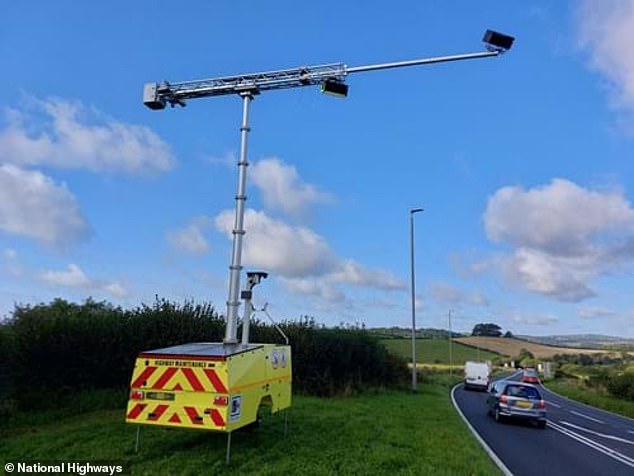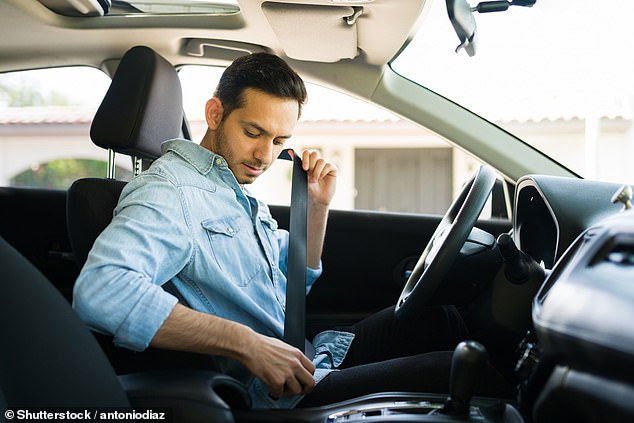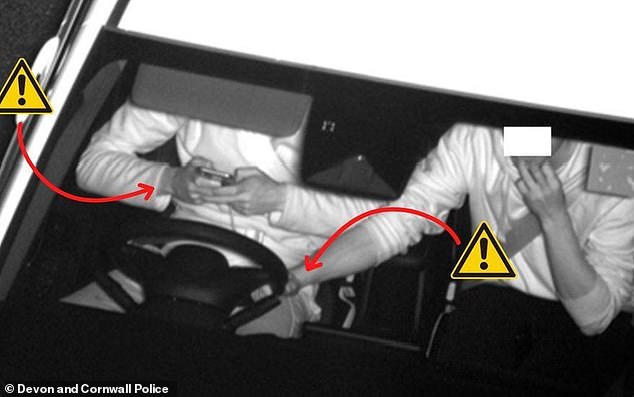Now beware of the eye in the sky! AI traffic cop deployed on roads in East Yorkshire and Northern Lincolnshire to catch motorists using phones and not wearing seat belts
It may seem like nothing more than a camera on a stick, but this AI traffic cop can help tackle bad drivers.
Today, Safer Roads Humber will deploy an AI-powered mobile camera to catch drivers on their phones and not wearing a seatbelt.
The camera, operated by Australian road safety company Acusensus, will be on the roads of East Yorkshire and North Lincolnshire for a week.
This is the second time the AI camera has been deployed in the area as part of a UK trial carried out by National Highways.
Ian Robertson, of the Safer Roads Humber partnership, said: ‘This state-of-the-art equipment increases our enforcement capabilities.’
A new AI traffic cop (pictured) will be deployed on roads in East Yorkshire and Northern Lincolnshire from today
The camera will be deployed from a clearly visible trailer along roads in the areas from where it will take pictures of drivers in oncoming traffic.
These images are then reviewed by an AI trained to detect whether drivers are using a mobile phone or driving without a seat belt.
According to a spokesperson for Safer Roads Humber, Acusensus will be responsible for installing the system on site and operating the detection software.
While Acusensus will conduct the initial review, the company will share any images flagged by the AI with Safer Roads Humber or National Highways for a secondary review.
This means that individual cases will be assessed by several people before a fine or prosecution is imposed.

The mobile camera uses AI to detect whether drivers are using a mobile phone or not wearing a seat belt and remains nearby for a week
Mr Robertson added: ‘Our current camera vans can already detect mobile phone users, seat belt violations and other offenses such as reckless driving, but this specialist equipment gives us extra capacity.’
This comes against the backdrop of a greater increase in the number of prosecutions for using mobile phones while driving.
According to data released by the AA earlier this year, the number of fixed penalty notices for mobile phone use increased by 93 per cent between 2021 and 2022.
The AA suggests this rise could be due to an increase in the number of dashcam detectives sending their footage to police to facilitate prosecution.
While cell phone use is still very common, it also increases the likelihood of drivers being involved in an accident.
Mr Robertson says: ‘Using a handheld phone while driving, whether texting, checking your status or calling friends, is a very conscious act.
‘Not wearing your seat belt is a very conscious act and if you are involved in a collision you are more likely to be killed or seriously injured.’
Safer Roads Humber has previously deployed this technology as part of its ongoing National Highways trial.

If the AI detects that someone is not wearing a seatbelt, the footage is sent to Safer Roads Humber for review by a human before issuing a warning, fine or prosecution.
The trial began in 2021 when motorists were issued warning letters after AI cameras spotted them driving without a seatbelt, and will continue until March 2025.
National Highways is working with infrastructure company AECOM, which is managing the implementation and storing all data collected during the trial.
All data collected will be retained by AECOM for three months after it has been transferred to the relevant enforcement agency.
Although results from the trial won’t be available until it’s completed, early data suggests the cameras could be very effective.
In one of the first deployments in Devon and Cornwall, almost 300 drivers were found using mobile phones or not wearing seat belts in just three days.

AI-powered cameras previously deployed in Devon and Cornwall caught 117 people using their mobile phones in just three days, as shown in this image
And as part of a 15-day trial in 2022, a larger vehicle-based system detected 590 seat belt violations and 45 cell phone violations.
Acusensus’ AI-powered cameras were also previously used in the Australian state of New South Wales, where they are estimated to have reduced road fatalities by a fifth.
Anyone caught using a mobile phone while driving could face a £200 fine or six points on their driving licence, while those not wearing a seatbelt could face a £100 fine.
But where possible, drivers can also be offered the opportunity to undergo training in lieu of a fine or prosecution.
